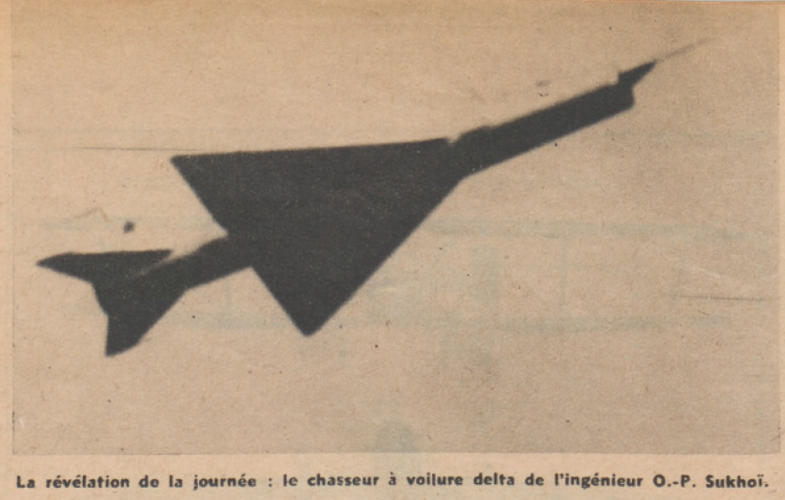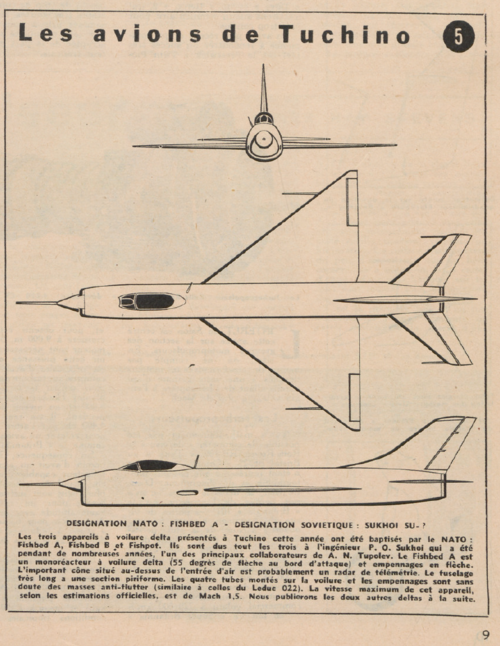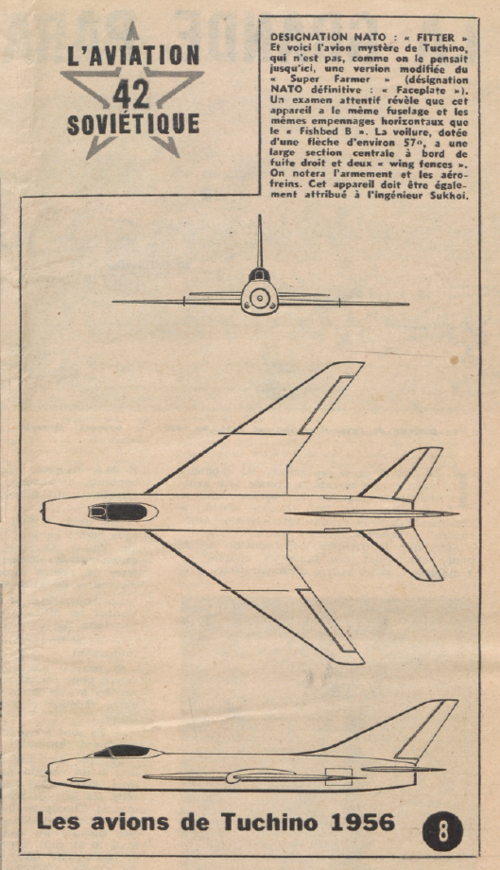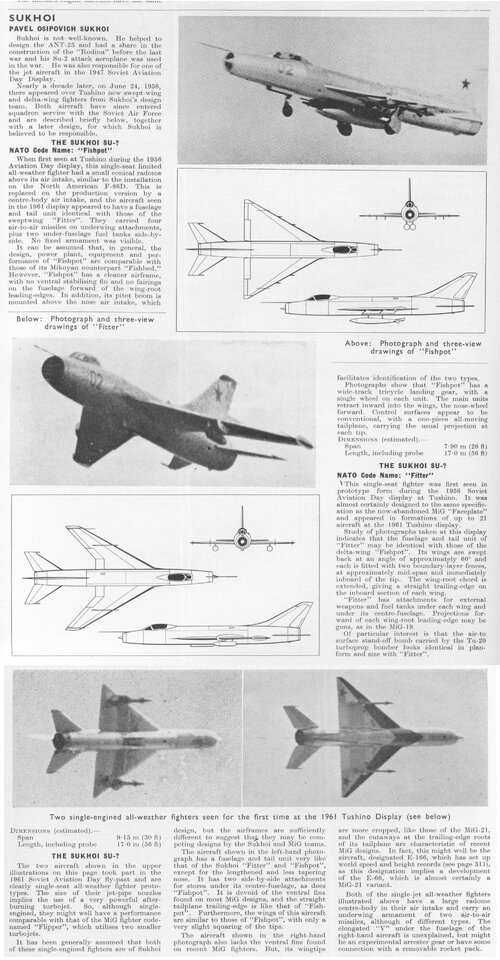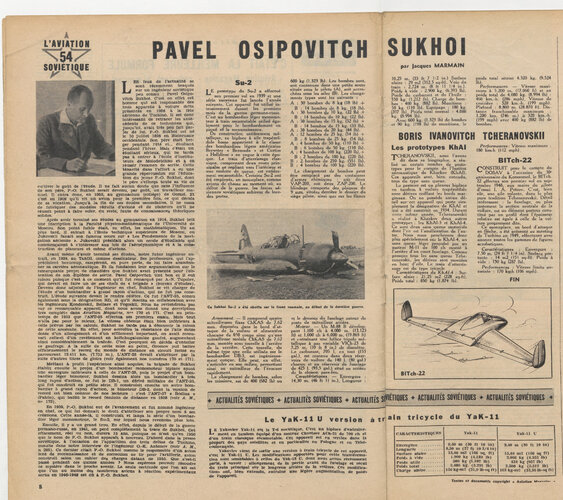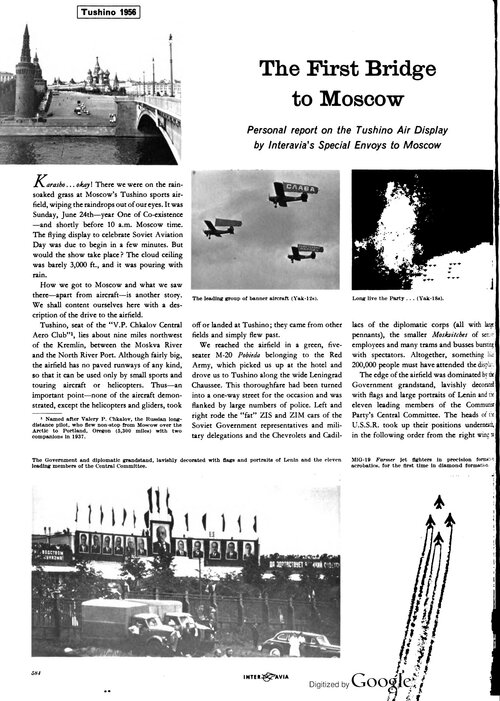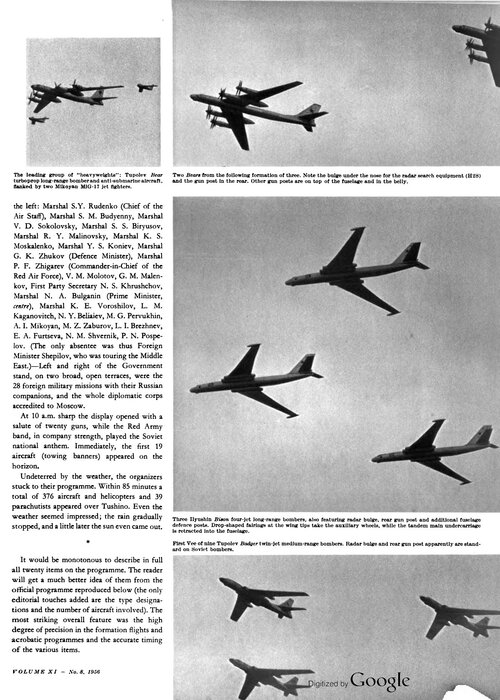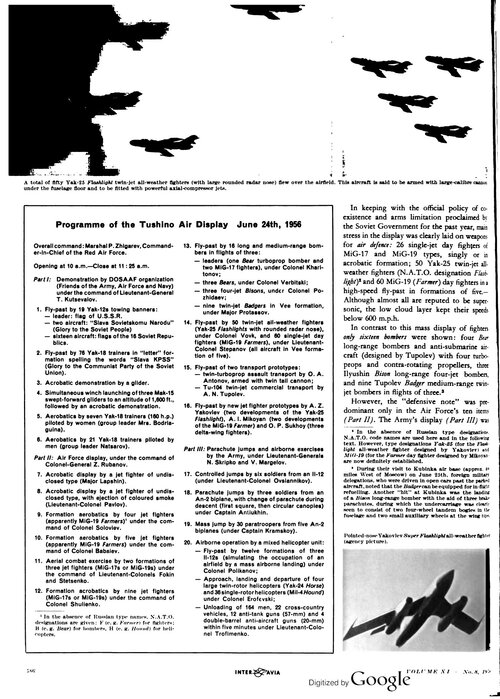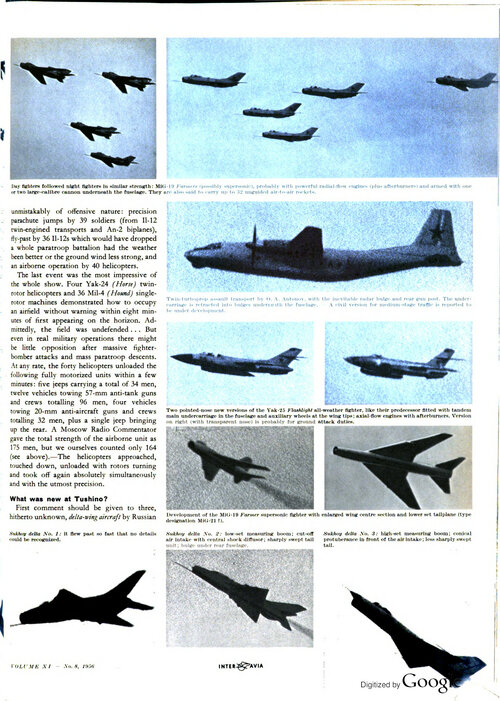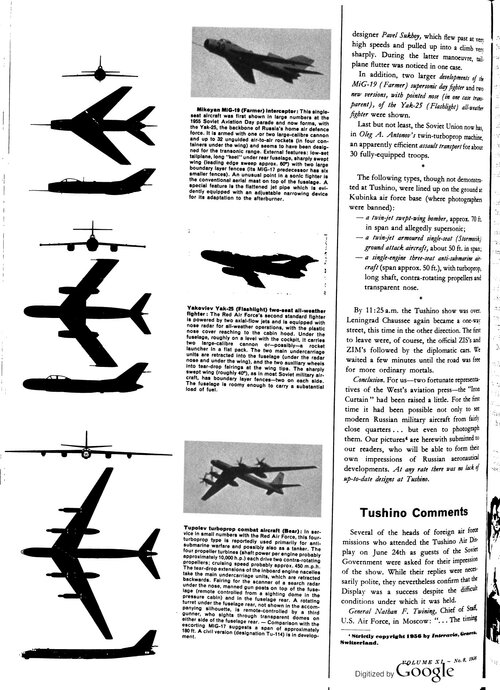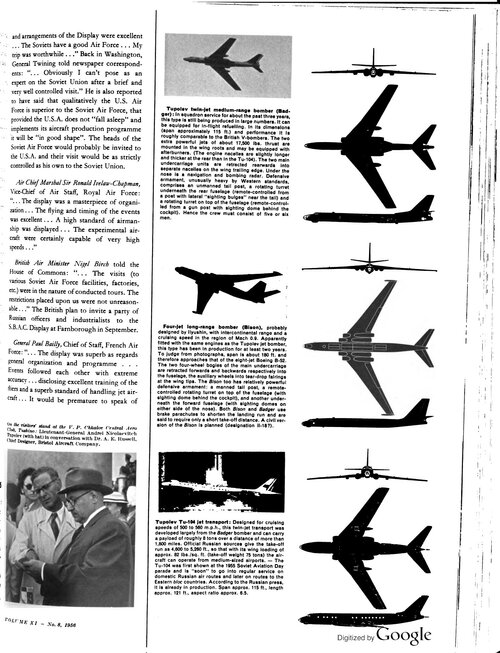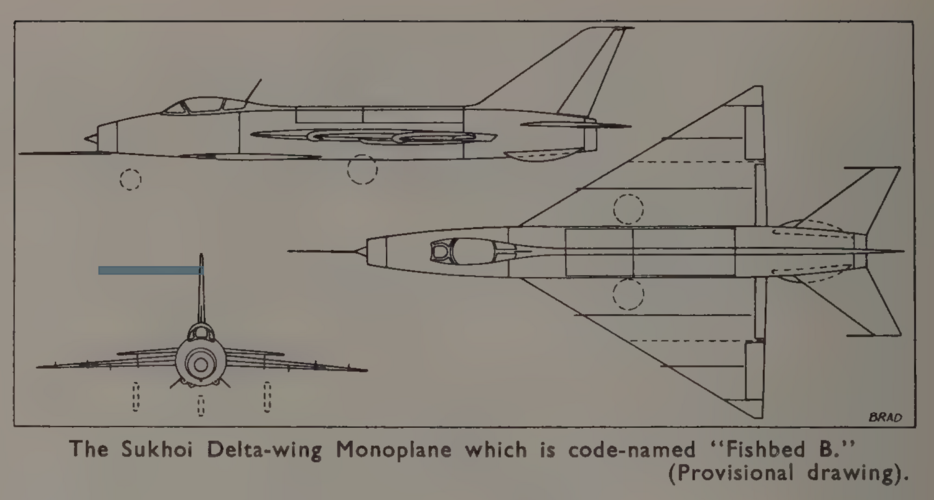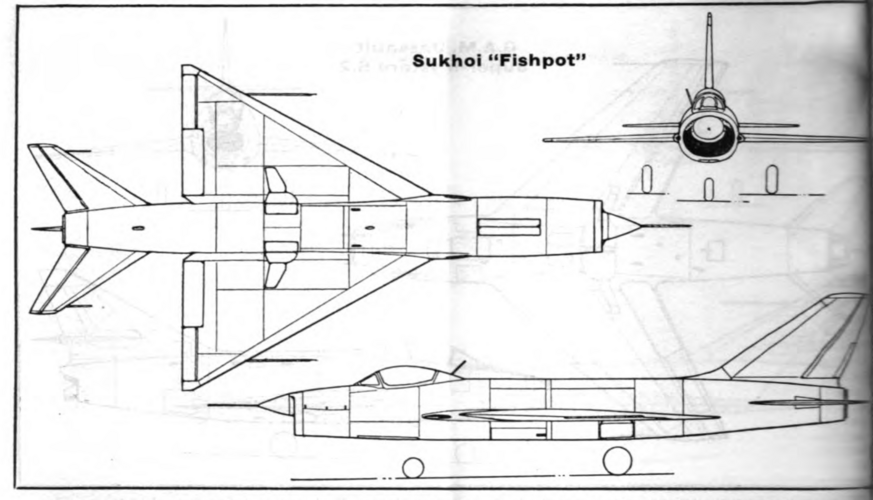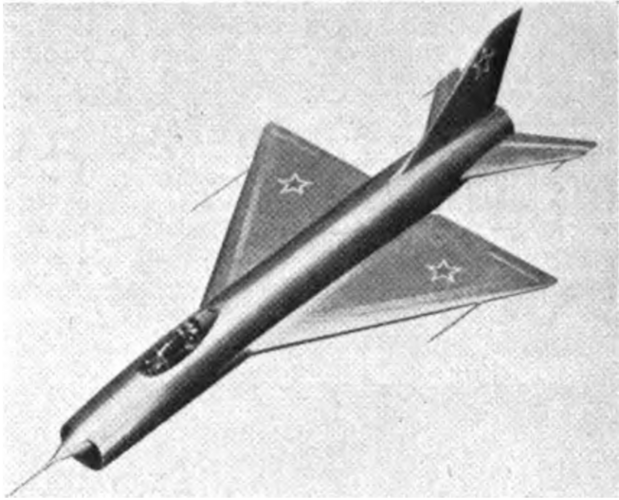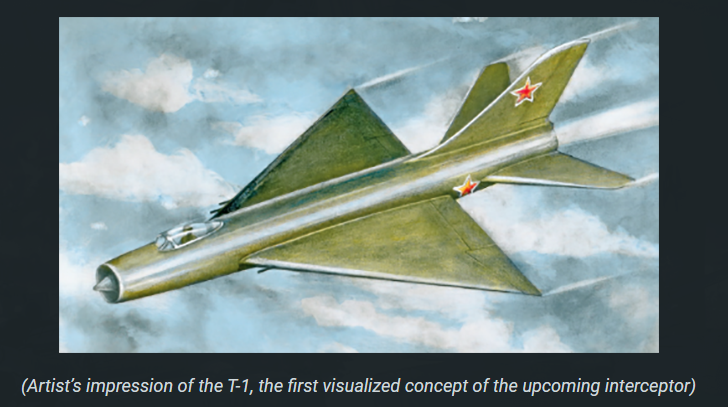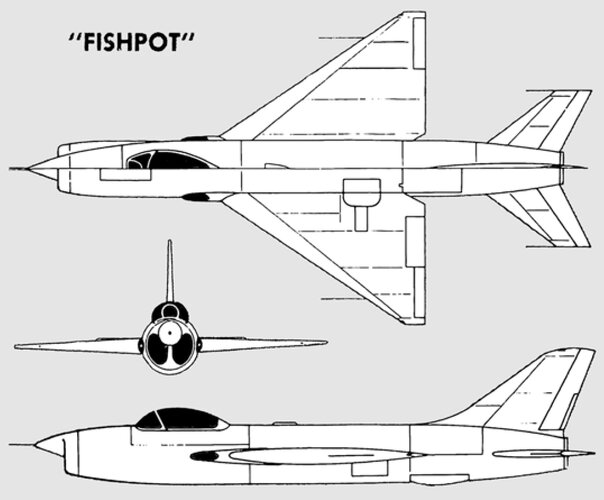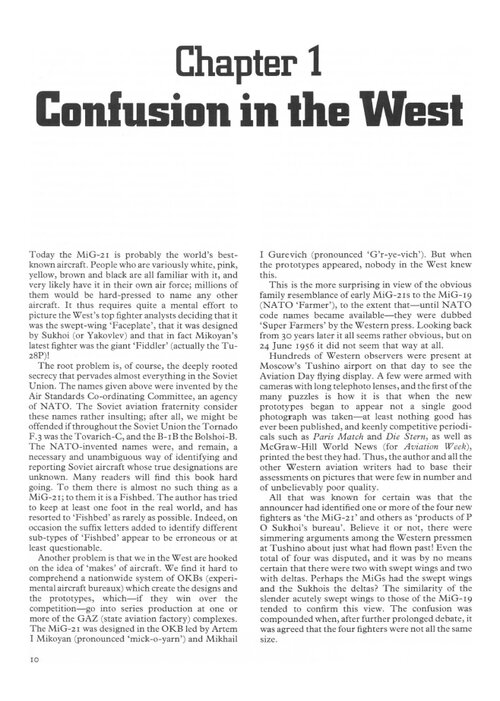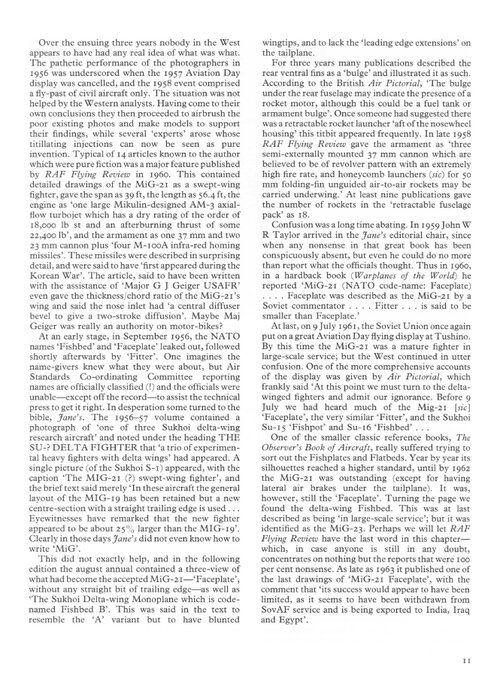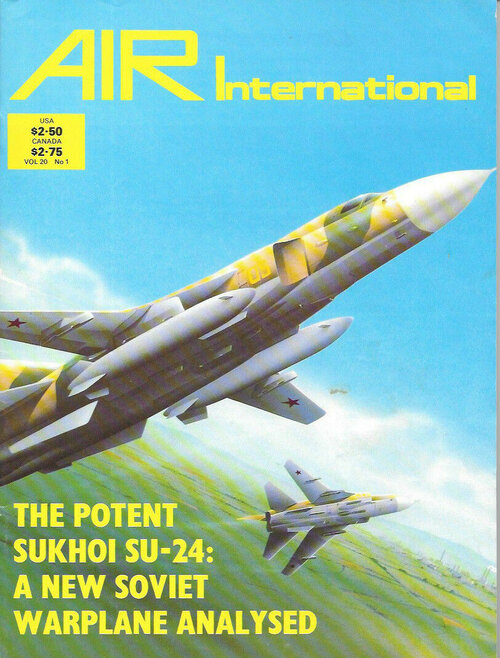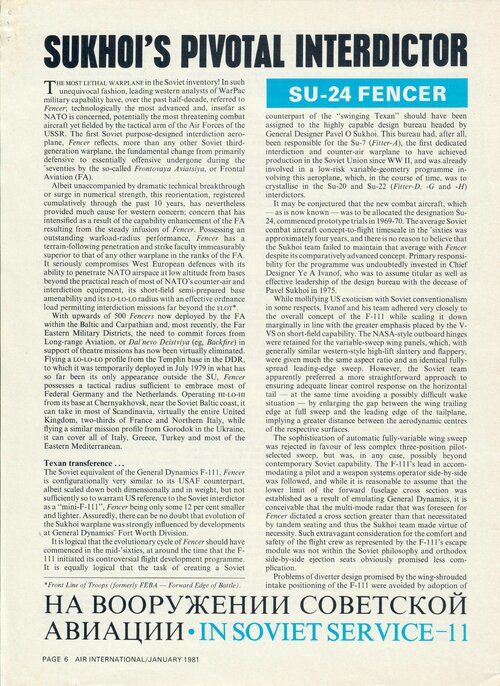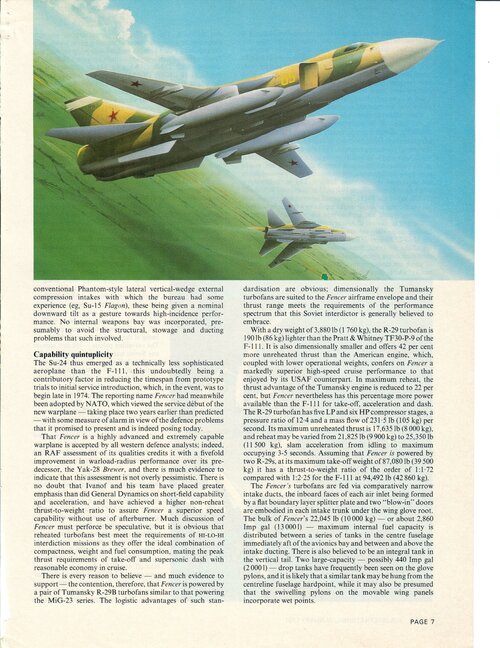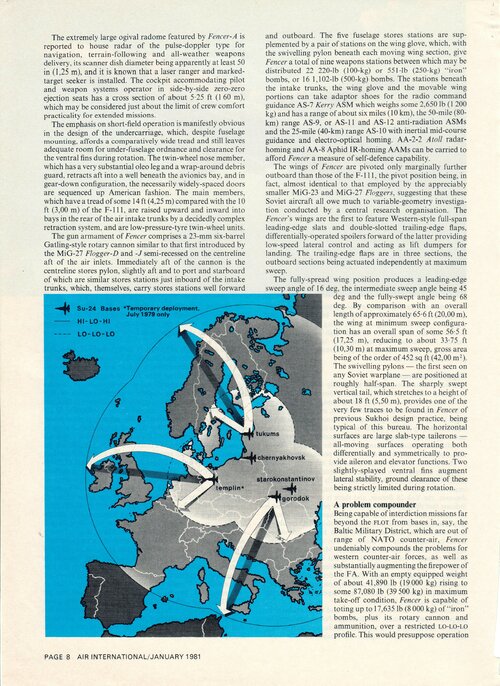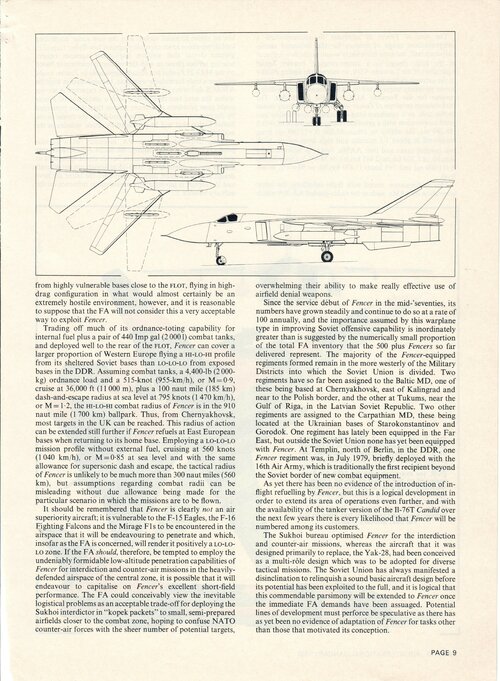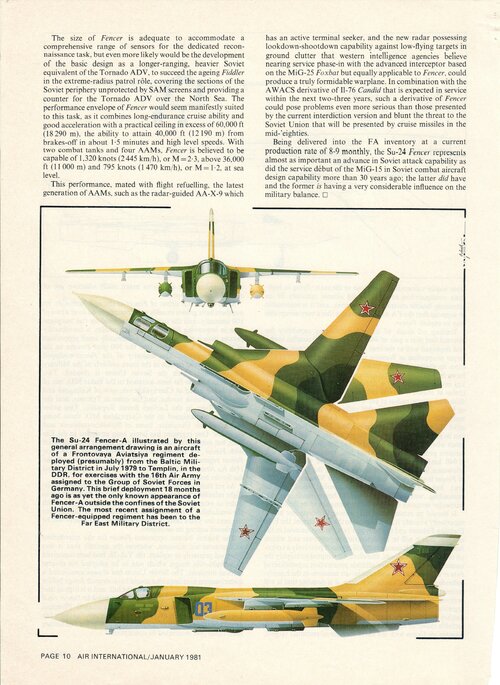SUKHOI
PAVEL OSIPOVICH SUKHOI
Sukhoi is not well-known. He helped
to design the Ant-25 and had a share in
the construction of the “Rodina” before
the last war and his Su-2 attack aeroplane
was used in the war. He was
responsible for one of the jet aircraft
displayed in the 1947 Soviet Aviation Day
Display.
Nearly a decade later, on June 24, 1956,
there appeared at Tushino three delta wing\
experimental fighters from Sukhoi’s
design offices. They appear to represent
three modifications of a basic design and
are described hereafter. The Su-15 is
understood to be in operational service
but the Su-16 has not gone beyond the
experimental stage.
The ‘‘T-431” single-jet aircraft in
which Major V. 8. Ilyushin raised the
world’s aeroplane height record to 28,852
m. (94,658 ft.) on July 14, 1959, is believed
to have been a Sukhoi delta-wing fighter.
THE SUKHOI Su-16
NATO Code Name: ‘‘Fishbed A’’
The ‘“‘Fishbed A” has a long tubular
fuselage and delta wings with a leading edge
sweepback of approximately 60°,
set in a mid or low-mid position. The
wing-tips are pointed. The tail unit is
conventional but the tailplane is noteworthy
in having large forward fillets
extending almost to the wing trailing
edge. There is a bulge under the rear
fuselage, possibly housing a rocket engine,
and ‘‘Fishbed A” appears to have an air
intake centre-body.
Span is approximately 7.5 m. (24 ft.
7 in.) and the length 14.6 m. (48 ft.).
Loaded weight is estimated at around
8,500 kg. (18,750 Ib.). The power plant
is thought to be an axial-flow turbojet
giving an output of some 5,000 kg.
(11,000 Ib.) s.t., perhaps increased by use
of an afterburner. The performance
may include a top speed of Mach 1.7 at
11,000 m. (36,000 ft.).
NATO Code Name: ‘‘Fishbed B’’
The “Fishbed B” is rather similar to
the “A” variant but has blunted wingtips.
The tailplane lacks the leading edge
extensions of the ‘“‘Fishbed A”’’,
According to U.S. Navy sources, this
aircraft has three boundary-layer fences
above each wing and a rack for external
stores under each wing.
This particular aircraft is the subject
of the adjacent illustration.
THE SUKHOI Su-15
NATO Code Name: ‘‘Fishpot’’
This aeroplane, which is believed to
be in limited operational service in the
Soviet Air Force as a single-seat all weather
fighter, appeared at the same
display in 1956 as the two ‘“‘Fishbeds’’.
It is distinguished from them by a conical
body at the top of the air intake orifice,
probably housing short-range target
locating and tracking radar. Armament
consists of air-to-air missiles, probably
of the infra-red target-seeking type.
This aircraft is believed to be powered
by a single turbojet engine developing
about 10,000 kg. (22,000 lb.) s.t., giving
it @ maximum speed in excess of Mach 2.
DIMENSIONS.—
Span 7.45 m. (24 ft. 5 in.)
Length 14.50 m. (47 ft. 7 in.)
WEIGHTS (approx.).—
Weight empty 4,100 kg. (9,020 lb.)
Weight loaded 5,800 kg. (12,760 lb,)
PERFORMANCE.—
Max. speed 1,580 km.h. (980 m.p.h.)
Cruising speed 1,450 km.h. (900 m.p.h.)
Climb to 11,000 m. (36,080 ft.) 1 min. 28 sec.
Ceiling 17,700 m. (58,060 ft.)
Range 1,760 km. (1,108 miles).

